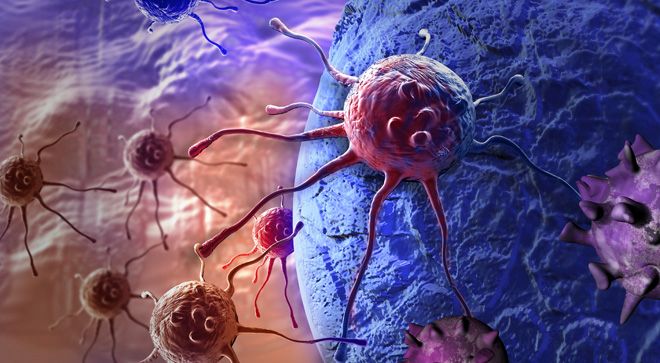Article
Bringing Clarity to Ocular Melanoma: Patient Advocate Offers Ways Support Can Help Patients, Loved Ones
Author(s):
Melody Burchett, of A Cure In Sight, discussed the value of seeking support after an ocular melanoma diagnosis, and how such help can be found in others with the same diagnosis.
When it comes to receiving a rare cancer diagnosis, like ocular melanoma, finding support in patients undergoing similar treatment or experiencing the same stress and anxiety can help to alleviate some of the burden.
“(Support groups are) out there, because I didn't know,” Melody Burchett, president of A Cure In Sight – an advocacy group that aims to support families who have ocular melanoma and focus on research for a cure for the disease – said in an interview with CURE®. “I couldn't find any and it took me a year and a half to find a support group.”
As a result, Burchett works to assist patients and their loved ones following an ocular melanoma diagnosis. She spoke with CURE® about why support is so important and ways A Cure In Sight can help.
CURE®: With ocular melanoma being so rare, why is support so important for patients to seek?
Burchett: As you probably know, rare cancers are hard. … When you have a rare cancer, you don't run into anybody who is like, “Oh, my sister or my nephew had that.” (Instead you get,) “I’ve never heard of that.” The number one question they (ask) is, “How's your eye?” But no one asks a patient with breast cancer, “How is your breast?” or a patient with prostate cancer, “How is your prostate?” And so it makes it a little bit more difficult because people don't understand the mechanism of (the disease). People think it's just your eye and you get your eye treated and you're fine.
And so when somebody is diagnosed with ocular melanoma, it blindsides them. They've never heard of this before. And most of them know melanoma is not good. And melanoma in your eye can't be good. So when you're diagnosed with this rare cancer that you've never heard of, and then you start hearing more about the statistics of it, it makes it very difficult to navigate. … That’s why (patients) need to find a good support group, a good advocacy group. You can live with (ocular melanoma), it just takes some adjusting, but you can do this. … (Patients) need to understand they're not alone and what this disease is, and there are many people living very well with it.
Can you discuss the types of support a Cure In Sight has to offer?
We have our financial assistance program where we give qualifying patients (money) to get them over the hump. (For example, if) you can't work for three weeks and (you’re experiencing a) financial emergency that you weren't expecting. (Patients) can use it for bills or medical bills that are related to ocular melanoma, they can use it for insurance, co-pays, insurance premiums, utilities, rent, mortgage, food, gas.
So we have a wide range of ways we'll help. … We also have a Cure Companion Program with a buddy program. So someone who's newly diagnosed, we get them hooked up with another person that's similar to them, where they can get firsthand information, talk to somebody who's been there. When something comes up, they can just pick up the phone and call somebody.
So those were the two programs that A Cure In Sight started with. Since then, we've developed a new patient packet that we sent out to new patients, and we send out to physicians to give to new patients. And it has some information about genetic testing, an awareness ribbon, silicone band, and a fun eyepatch, some stickers, just some fun stuff. And that makes them feel connected to something.
When I was diagnosed, it was not a color, there was not a ribbon, and there was absolutely no awareness merchandise. So A Cure In Sight was instrumental in getting all of those set up. And we do have a store with awareness merchandise because that is important for patients to have something to connect to.
We have developed the very first registry. While that's not really a patient resource, it does allow patients to document their journey, and at the end of each survey, they see a pie chart, and they can see exactly where they fit into the population. So if they are blue-eyed, blond hair or dark brown hair, brown eyes, they can see where they fit into this pie chart. (They can also see) other people are depressed. So while it's not necessarily a resource, it can be a resource for them. And it's a way for them to give back, which then makes them feel like they're worthwhile because they've given back and they're participating in the community.
(We) have a podcast (featuring patients and doctors), and that's helpful. … We have a Zoom meeting (every Tuesday night), and that's really good support for them. They can see each other, they can talk, they develop bonds. And then other people other patients will offer support and insight and try to give them some useful tools. We have done (yearly) education seminars, where patients can come and meet each other and meet the physicians personally and get good information. And then our team does webinars and seminars throughout the year to bring (patients) up to date on what's happening.
What is the best way for patients to educate themselves on support groups, resources and advocacy groups?
If they look for trusted sources, they can find a lot of really good information. But it has to be a trusted source, you can find a lot of bad information, too. There's a lot of outdated information. So always look for a trusted source. And start there. Find other patients and ask them, even if you're in the waiting room of the doctor. Ask (the patient next to you), “What are you finding works? Is there something that I can do better? Is there something that can help me?” Patients are the absolute best source of information.
Transcription edited for clarity and conciseness.
For more news on cancer updates, research and education, don’t forget to subscribe to CURE®’s newsletters here.





